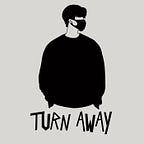Ready Player One
What can be more fun than watching the legendary Steven Spielberg geeking out with cinematic technology and redrawing the boundaries of what tools can be deployed at the service of making pictures?
In his adaptation of Ernest Cline’s best-selling, age-defining novel, Ready Player One, Spielberg sees a future of not just cinematic language; but also chronicles a future that doesn’t seem too far away now.
In his hands, Ready Player One becomes a document of our generation’s existential dilemma and increasing disconnect with the reality and a very vacant life of modern times that’s intoxicated with the synthetic, pop-culture-infused symbols and high!
The cinematic trick of Ready Player One is one of the key highlights and it’s where Spielberg really drives his point home about the modern life, especially, modern urban life. The film unfolds at a time in 2045, when the world is ravaged with wars, climate change, famine, and as the film also highlights in the opening monologue — the “bandwidth riots”. In a world already consumed by Netflix, Amazon Prime, YouTube, smartphones, VR and casting, where every single one of us is beaming more data than we could ever have imagined 10 years ago, high-speed and unlimited internet is something that we take for granted as much today, as we used to take perhaps Coke at one time, or even water even way back! In a world dominated and driven by OASIS VR, where billions live and thrive in VR other than as Wade says for bathroom, eating and sleeping, bandwidth riots are only telling signs of times to come.
Mr. Spielberg constantly cuts away from the long seductive montages and relentless synthetic footage of VR to RR (real reality) to almost make a morbidly humorous statement about us as a specie where we suddenly see all these people appearing crazy in a banal sort of way (someone even rushes to jump off a window to kill himself, because he faces loss in a game within the OASIS). Millions on the streets, or in offices, or even in their homes falling, punching the air, gesturing in the air to invoke something — it all looks silly; but that’s the point. The duration of shots in VR are long, and full of cinematic trickery, at places even long, unbroken to seduce us, the audiences, into this amazing world where even zero gravity is sexy because we got Bee Gees to give us company, and we can evoke Saturday Night Fever, and a dance floor to groove to… There’s a surprise element that Mr. Spielberg holds on to, to disorient us — the gender element, for example, the age element of characters vs. the avatars. We don’t realize the full extent of disorientation until after the movie is over, which is when it hits us — “What was the point of it?”
If you’ve read Ernest Cline’s novel, it doesn’t have a bleak perspective of VR as much. It does offer a pretty bleak view of the reality, or at least subjective reality from the perspective of Wade Watts; but in the novel, Cline revels in the world of possibilities of VR such as a delinquent kid getting education and life-altering experiences in VR. Watts as a teen even finds solace in family sitcoms within VR, not because he finds escape in them; but because in that world he finds connection and emotional anchor that he longs for; but doesn’t see anymore in the decrepit reality. But Mr. Spielberg’s view of VR is far bleaker or at least he positions VR and society’s addiction to it on the similar plane as he does synthetic drugs — nothing more. He uses existential banality to continually puncture the thrill and high of VR, and therefore perhaps, even diffuse the thrilling payoff the audience might expect at the climax of a picture such as this!
Make no mistake, Mr. Spielberg is a sucker for nostalgia in real life, perhaps even bigger than Ernest Cline, and he is also as much a futurist as any mainstream Hollywood filmmaker you can ever find; but he sees more value for VR in streams other than social connect and entertainment — fields such as education, healthcare, and services, etc. In his view, reality is best savored with people — in the company of pain and joy. The addiction to an escapist, synthetic reality that’s totally simulated, is perhaps the modern day’s coke or meth.
While, the film’s underlying message or statement about VR’s commercial deployment in today’s terms is bleak; the treatment that Mr. Spielberg gives his material is simply and quite literally “out of this world”. Here is the filmmaker that opened up a world of whole new possibilities in terms of deploying VFX and CGI with Jurassic Park, and now, again — redefining contours of filmmaking itself — with VR. The seamlessness in the creation of IMAX-worthy simulated synthetic world of OASIS, and the swirl of cameras within “The Distracted Globe” or shot breakdowns and cutting of the action sequences — this is a master music conductor at work — orchestrating a phenomenal symphony!
Imagine the actors stranded in 4000 ft sound-stage with 150 motion-capture cameras planted everywhere within the stage, even dangling off the ceilings. All the actors wearing VR headsets to step into the “actual” location and performing, and mo-cap cameras capturing performances… Even for a 71 year old filmmaker to wear VR headset, supervise and survey the entire location in pre-viz in the VR world, and using his avatar to navigate the entire location with the help of a joystick to plan camera placements, and shot breakdowns — wow! That just talks about the blurring the lines between real and simulation.
Ready Player One, in the end, is a heady high, and a demonstration of a filmmaker still being to re-imagine the future of cinematic craft! Welcome to the future of cinema and the world, Spielberg style!
